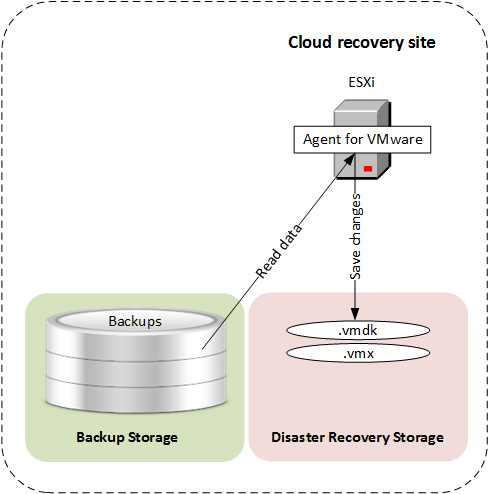
The failover operation employs the "run VM from a backup" functionality.
When we say "a recovery server starts", it means that a virtual machine with predefined parameters is run from one of the backups of the original machine.
During a test failover, the virtual machine is not finalized. This means that the agent reads the virtual disks' content directly from the backup, i.e. performs random access to different parts of the backup. Therefore, the server may work slower, but occupies little space on the datastore (the disaster recovery storage).
During a real failover, the virtual machine is finalized as soon as possible, to achieve the best performance. Once a recovery server starts, its state changes to Finalization. This process transfers the server's virtual disks from the backup to the disaster recovery storage. In fact, the virtual machine recovery takes place while the machine is running. Because of this process, the server may work slower. When the finalization is completed, the server performance reaches its normal value. The server state changes to Failover.
If the recovery server has a backup agent inside, the agent service is stopped to avoid undesired activity such as starting a backup or reporting outdated statuses to the backup service.
The following diagram illustrates running a recovery server, including storage consumption.
